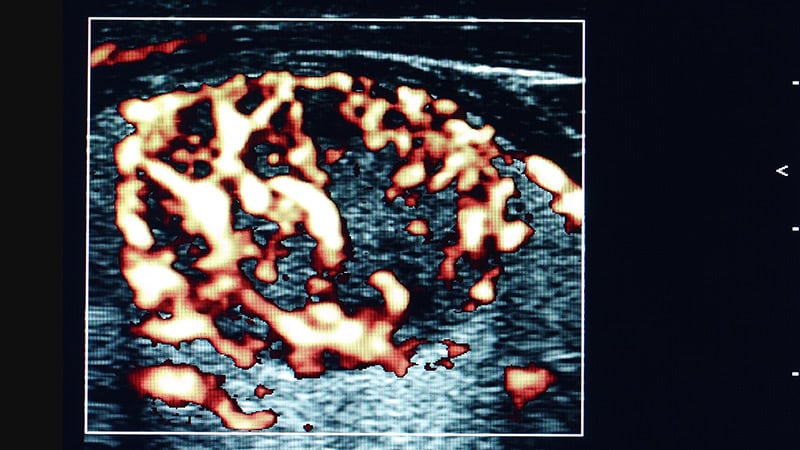Inappropriate Use of Thyroid Ultrasounds Study Findings
Core Concepts
Inappropriate use of thyroid ultrasounds leads to over-detection and overtreatment of benign nodules and small cancers.
Abstract
The study highlights the inefficiency of dedicated thyroid ultrasounds in identifying biopsy-recommended nodules, leading to over-detection and overtreatment. Here is a breakdown of the key points:
Key Points:
Nearly three-quarters of thyroid ultrasounds fail to identify biopsy-recommended nodules.
The increase in thyroid ultrasounds strains healthcare resources and leads to over-detection.
Indications for ultrasounds vary, with different detection rates based on the reason for the ultrasound.
Clinical implications suggest that ultrasounds should not be the first step for patients with compressive symptoms.
Lack of guidelines on when to order thyroid ultrasounds poses challenges in appropriate utilization.
The study emphasizes the need for guidelines to determine the appropriateness of ordering thyroid ultrasounds.
Study Suggests Inappropriate Use of Thyroid Ultrasounds
Stats
"The number of thyroid ultrasounds performed in the United States has increased fivefold since 2002."
"Nearly half of the ultrasounds found no nodule and only one in five detected a nodule that warranted a biopsy."
"Among all ultrasounds performed, 62% identified a thyroid nodule."
"Overall, only 27% of ultrasounds identified a thyroid nodule that was recommended for a biopsy."
"Mean nodule size was largest among the patients referred for incidentalomas (2.4 cm)."
Quotes
"Thyroid cancer has grown in incidence three to four times over the last 30 years without a good explanation for why."
"Ultrasounds are low cost and low risk. Those two factors result in people ordering more tests."
"Addressing when not to do an ultrasound will be an important consideration in the next guidelines."
Key Insights Distilled From
by Miriam E. at www.medscape.com 12-18-2023
https://www.medscape.com/viewarticle/study-suggests-inappropriate-use-thyroid-ultrasounds-2023a1000vox
Deeper Inquiries
What factors contribute to the significant increase in thyroid ultrasounds in the United States?
The significant increase in thyroid ultrasounds in the United States can be attributed to several factors. One key factor is the rise in awareness and screening for thyroid nodules and cancers, leading to more frequent diagnostic evaluations. Additionally, advancements in technology have made ultrasounds more accessible, cost-effective, and less invasive, prompting healthcare providers to utilize them more frequently. Moreover, the increasing incidence of thyroid cancer over the past few decades has also fueled the demand for thyroid ultrasounds as part of the diagnostic workup.
How can healthcare providers balance the benefits and risks of ordering thyroid ultrasounds appropriately?
Healthcare providers can balance the benefits and risks of ordering thyroid ultrasounds appropriately by carefully considering the indications for the test. It is crucial to follow evidence-based guidelines and recommendations when ordering ultrasounds, focusing on patients with specific symptoms or risk factors that warrant further evaluation. Providers should weigh the potential benefits of early detection of clinically significant nodules or cancers against the risks of over-detection, unnecessary biopsies, patient anxiety, and healthcare costs. Shared decision-making with patients, based on individual risk profiles and preferences, can also help in ensuring appropriate utilization of thyroid ultrasounds.
How might the lack of guidelines for ordering thyroid ultrasounds impact patient outcomes in the long term?
The lack of guidelines for ordering thyroid ultrasounds can have significant implications for patient outcomes in the long term. Without clear guidance on when it is appropriate to order ultrasounds, there is a risk of overutilization, leading to the detection of incidental findings that may not be clinically relevant. This can result in unnecessary biopsies, surveillance, patient anxiety, and increased healthcare costs. Moreover, the absence of standardized protocols may contribute to variations in practice patterns among healthcare providers, potentially affecting the quality and consistency of care delivered to patients. Establishing clear guidelines for ordering thyroid ultrasounds is essential to optimize patient outcomes, reduce unnecessary interventions, and enhance the overall quality of thyroid nodule management.
0
More on Healthcare
